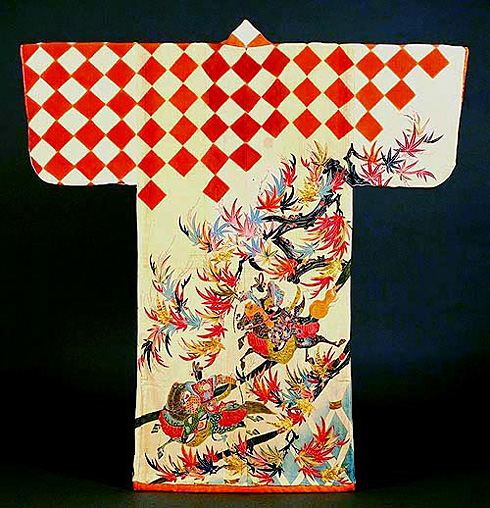Kosode
The kosode was first worn as underwear by Heian kuge, who wore them under their nightclothes. This kosode was of the tsubosode variety — that is, the sleeves are straight “tubes” rather than sculptured or shaped sleeves, or were sharply tapered and cut rather close to the arm.
Kosode were commonly worn as uchigi (as well as underwear) by buke during the Kamakura era, at which time they became legitimate garments in their own right and became more dressy and full, with less sculpted sleeves. When the kosode became outer wear, the jûban (or hadajûban) developed as replacement underwear robes. Essentially, it was identical to the older model kosode, and served as underwear (much like a modern white T-shirt) from the Muromachi period through the Edo.
The undergarment kosode of Heian and Kamakura was invariably white; Muromachi and Momoyama versions were patterned. In the Heian period, commoners wore a kimono-like garment which also started to be called kosode since the sleeves were small. (These kosode were only slightly different garments than the Heian nobility’s underwear.)
An important point that must be made is that kosode (lit: “little sleeve”) weren’t just so called because the sleeve was small; they were given the name because the sleeve opening was small (especially when compared to other garments of the period, which were often termed ôsode, or “large sleeves”).
So how do I wear this stuff?
First, all kosode are worn the same way, whether or not they are underwear. Wrap the right-hand panel across your body, then the left-hand panel on top of it. The panels should wrap around past your hip bone so that they stay in place. The Japanese only wrap the right panel over the left on dead people, so don’t do that.
